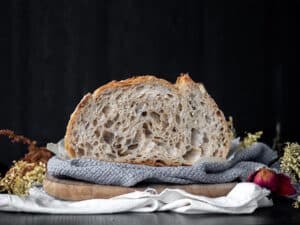An essential tool for professionals in the breadmaking industry, sensory analysis consists of highlighting and describing the organoleptic properties (appearance, smell, sound, texture, taste) of bread by a panel of experts and consumers.
Sensory analysis, a tool for the breadmaking industry
Recognized for their sensory expertise, Lempa and Lesaffre have jointly developed a lexicon of precise sensory descriptors adapted to crusty breads. This tool, used by supermarkets, manufacturers or artisans in their marketing, R&D and Quality approaches, makes it possible to relate two approaches: that of consumers (not informed), more subjective and that of experts (having followed specific training ), more objective.
The importance of the “sound” criterion
Rather crisp or crisp, the bran of the bread is a very important characteristic that tells us in particular about its freshness. Sharing experience, Carine CNUDDE, Bread Technical Development Manager, in the Bakery – Viennese pastry – Pastry industry .
“The texture of a bread is a concept that is, in my opinion, fundamental. I characterize it by the balance between the texture of the crumb and the texture of the crust. Crunchy and crispy are terms often used to characterize the crust, but they are terms that are not easy to define and understand. The consumer describes it more intuitively when talking about an easy or difficult to eat bread. Consumer appreciation is conditioned by his use of bread (eg sandwich bread or accompanying bread) and there are also generational differences (thick crust less popular with young people). Consumers are either looking for breads with a thin, crisp crust, or breads with a more rustic appearance and a thick crust. In both cases,
To meet this market demand, Marketing and R&D work in close collaboration. We closely follow consumer trends and develop breads by choosing specific ingredients and adjusting manufacturing processes in order to obtain good crispness and optimal taste ”
Sensory analysis of crusty bread
The analysis was worked on along two axes; the sound to the touch and the sound in the mouth, both relating only to the sound of the crust of the bread.
The sound of the crust of bread, to the touch
Objective: to evaluate the noise and the crackle of the stick during a rapid pressure exerted in the centre of the grigne, the fingers below and the thumb above.
Expert descriptor: the “crunchy” measured from the absence of sound to a loud and frank sound
Consumer vocabulary: soft, rubbery, moist or crunchy, crispy, dry, rusk.
The sound of the crust of the bread, in the mouth
Objective : to evaluate the number and the sound intensity of the cracks perceived by crunching several times in a small piece of baguette (crust and crumb) placed between the teeth.
Expert descriptor : the “crispness in the mouth” measured from the absence of cracking to numerous crackles.
Consumer vocabulary : crunch, crunchy, crumbly.
The sensory lexicon “sound” of crusty bread
The descriptors most frequently used by experts: crunchy, crisp
The terms most spontaneously cited by consumers: crunchy, crisp




